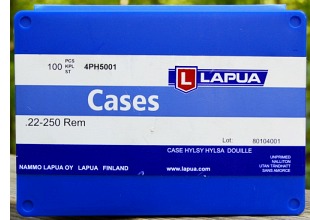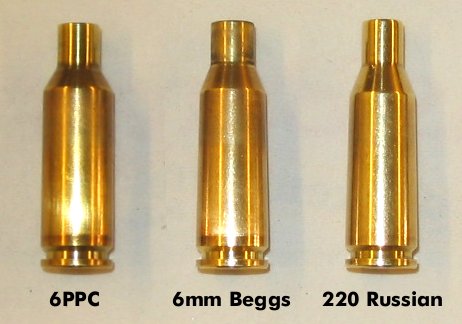September 12th, 2009
Our current “Cover Story” for the website is about the 6XC Cartridge. German Salazar, a top prone shooter who has won the Arizona NRA Long-Range Championship using the 6XC, reveals how to get the most accuracy out of the cartridge. German discusses brass options, recommended bullets for long-range competition, and German also discusses the pros and cons of various 6XC dies.
CLICK HERE for 6XC Cartridge Review by German Salazar.
The 6XC cartridge was developed by David Tubb, and it has captured multiple Camp Perry Championships. Now that Norma brass is available, the 6XC is an outstanding choice for shooters looking for an ultra-accurate, easy-recoiling cartridge that offers more “horsepower” than the 6BR or 6BR Improved. Team Norma, shooting factory-loaded 6XC ammo, captured the 2007 300m world championship. This was the first time in many years that a cartridge other than the 6BR has won “all the marbles” in international 300m competition. And just last week, the Swedish Team of Anders Brolund, Johan Gustafsson, and Mikael Larsson won the 2009 European 300m Championship shooting the Norma 6XC.


Forum members and 6XC shooters Mudcat and German Salazar are both very happy with their choice of chamberings. German tells us:
“The 6XC is a great long-range cartridge, it needs no excuses and can hold its own against any other LR cartridge. I prefer to use Norma 6XC brass, but 22-250 brass can be used by running through a 6XC full-length die and then fire-forming. It will look pretty nasty at first, but it will shoot just fine even fire-forming.
 I principally use the 6XC for 1000-yard prone shooting (sometimes at 600). The main bullet I use is the Berger 115 VLD (in a 30″ Krieger with 1:7.5″ twist). The best powder I’ve found for the Berger 115 in the 6XC is H4831sc. Velocity is in the 3000 fps range.
I principally use the 6XC for 1000-yard prone shooting (sometimes at 600). The main bullet I use is the Berger 115 VLD (in a 30″ Krieger with 1:7.5″ twist). The best powder I’ve found for the Berger 115 in the 6XC is H4831sc. Velocity is in the 3000 fps range.
Whether the 6XC is ideal for any given person depends on a lot of factors. I tend to shoot fast and keep the rifle in my shoulder. Accordingly, a low-recoil cartridge suits me because it doesn’t require any repositioning of the rifle or rebuilding of position during a 22-shot string. I know how to read wind, so whether a cartridge drifts a few inches more or less than another isn’t really a concern to me, I learn the cartridge’s behaviour and work with what I’ve got. The 6XC shines because it is ACCURATE at 1000 yards and without that, you’ve got nothing. Accuracy, low recoil, reasonable wind drift, good component availability, decent barrel life, what else is there to want in a long-range cartridge?”


Mudcat concurs that the 6XC is a great cartridge for High Power Competition:
“I am not sure there really are ‘downsides’ for the 6XC. Well, maybe barrel life, if you are used to shooting a 223 or 308. I have fired about 15,000 rounds of 6XC over the last couple of years and havent really found a negative. My 6XC barrels get an easy 2,000 rounds. In fact, most get upwards of 3,000 before I move them to strictly off-hand and rapid-fire use. (I am a High Power shooter, not a Benchrester.)
Propellant — Powder choices are excellent. However, contrary to what German has found, I can’t get H4831sc to get me the velocity that the H4350 can. I have found only two powders that deliver more speed than H4350.
Cases — Just use Winchester 22-250 cases as they last 20+ firings and you never have to trim them. I use Winchester 22-250 brass rather than any of the Tubb or Norma offerings — they are just too soft for my liking. With the Winchester, I know what I am dealing with and know I will get at least 20 firings out of it, on average. And, I never have to trim it. While I have a Giraud power trimmer, I would just as soon not do it.
Bullets — Well, 6mm bullets are out there for about anything you want to shoot.
Velocity — The 6XC offers plenty of speed. Is 3000+ fps with a 115 enough for you? I certainly hope so.
Accuracy — I can’t out shoot the 6XC round. About any decent load will work just fine. Shoot, all my 300-yard and less ammo is loaded on a Dillon 650! Overall, I agree with German, the 6XC will definitely hold its own and I am not sure that my 6.5×284 running 142s at 2950 fps actually drifts much less than the 115 VLDs.”
Share the post "Norma's 6XC Delivers Outstanding Performance"













 What the Numbers Mean
What the Numbers Mean Our friend Robert Whitley of
Our friend Robert Whitley of 
 6mm-250 Imp 30 Shows Great Accuracy
6mm-250 Imp 30 Shows Great Accuracy Hey guys, here’s your chance to buy
Hey guys, here’s your chance to buy 


 I principally use the 6XC for 1000-yard prone shooting (sometimes at 600). The main bullet I use is the Berger 115 VLD (in a 30″ Krieger with 1:7.5″ twist). The best powder I’ve found for the Berger 115 in the 6XC is H4831sc. Velocity is in the 3000 fps range.
I principally use the 6XC for 1000-yard prone shooting (sometimes at 600). The main bullet I use is the Berger 115 VLD (in a 30″ Krieger with 1:7.5″ twist). The best powder I’ve found for the Berger 115 in the 6XC is H4831sc. Velocity is in the 3000 fps range.







